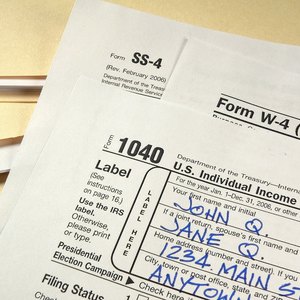
The purpose of an IRA is to build retirement savings. If you have a traditional IRA where you plan to pay taxes when you begin taking distributions, you can face stiff penalties if you take money out before the age of 59 1/2. There are many reasons why you should avoid liquidating your account before you have reached the minimum age for doing so.
Penalties for Cashing Out
The IRS has rules in place to discourage you from dipping into your retirement account before you are eligible. There are circumstances where this might be the best choice, but it should only be done in case of a dire emergency, such as a medical emergency. It should not be done to pay for a vacation or new boat.
The IRS imposes a 10 percent penalty if you liquidate IRA account funds or start taking early withdrawals. This is a big penalty and can cost you a large portion of your hard-earned money. The IRS does have special rules for hardship withdrawals, but you are limited to the amount of the financial need.
How to Liquidate IRA Account
You can liquidate your IRA account at any time for any reason. It is your money, but the penalties might make you think again. If you do liquidate your IRA account, you will receive a Form 1099-R that records the distribution, and you will have to report it on your taxes.
To liquidate or cash out your account, you simply request a total distribution from your account from your custodian. If the distribution is considered non-qualified, you will have to pay any penalties and taxes that are due from the distribution amount. It might be possible that you have a taxable and a non-taxable portion to report. You can find instructions for calculating and paying your penalties and additional taxes on IRS Form 5329. If you completely liquidate your funds, you will also have to file Form 8606.
Consequences of Liquidation
Aside from the taxes and penalties that you will owe if you liquidate a traditional IRA, you also need to consider the losses that are associated with the money that is not in the account compounding for you. This is a much greater consequence than the fees and penalties over the long run.
If you take an early distribution, you will have to find a way to make up the losses and catch up on your retirement savings. You now have less time to let compounding work for you, and you will have to make bigger deposits to get the account caught back up to where it was before you liquidated the funds.
If you have any other way to cover an expense, it is always better to leave the money in your IRA if possible. There are some allowable distributions where you will not have to pay the 10 percent penalty. These include:
- Qualified higher education costs for you or a dependent.
-
Health insurance premiums if you are unemployed.
-
Nonreimbursed healthcare expenses.
-
Cost of a first home for you, your children, grandchildren or parents up to $10,000.
If you qualify for any of these withdrawals, you can only take out the amount needed without penalties. Liquidating your IRA is a serious financial move that could have major consequences and derail your retirement plans. That is why the IRS imposes such stiff penalties. They want you to think about whether it is the only option and is necessary. Your custodian will probably ask a lot of questions about your reasons, too.
References
Writer Bio
Adam Luehrs is a writer during the day and a voracious reader at night. He focuses mostly on finance writing and has a passion for real estate, credit card deals, and investing.

